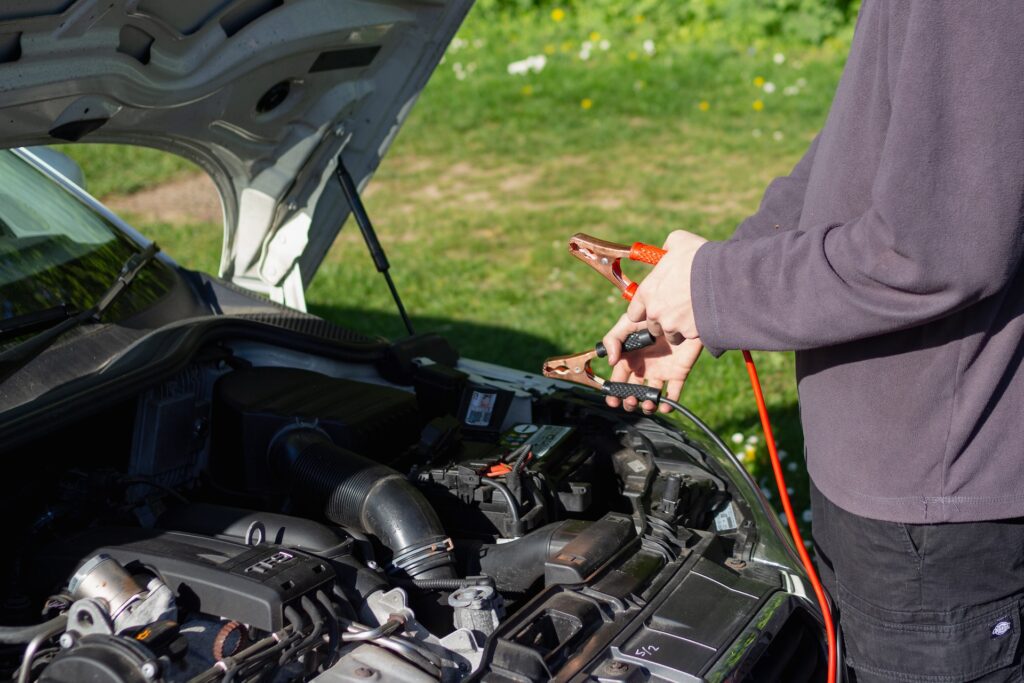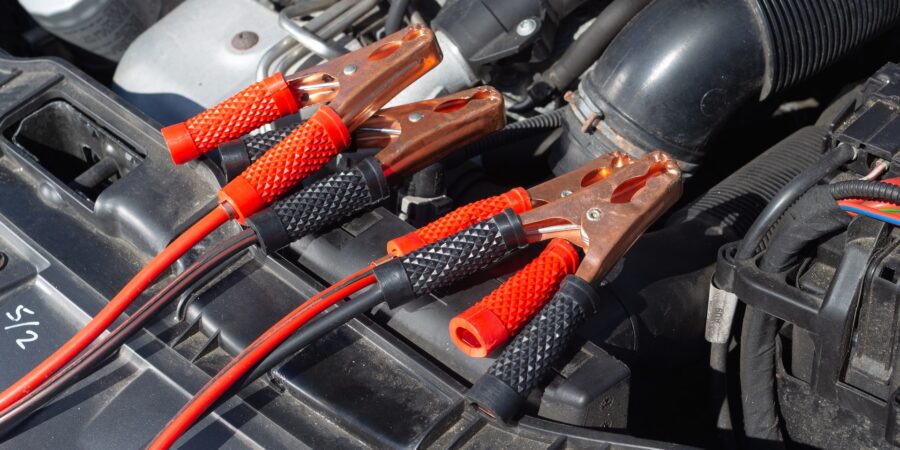Ultimate Guide to Car Battery Maintenance: Tips & Tricks
Car battery maintenance is an integral part of ensuring optimal performance and longevity for your vehicle. Many car owners tend to overlook the importance of properly maintaining their batteries, often resulting in unexpected breakdowns and costly repairs.
By implementing regular maintenance practices, you can avoid such inconveniences and extend the lifespan of your car battery. The role of a car battery extends beyond simply starting your vehicle; it powers the entire electrical system.
From providing electricity to start the engine to supplying power for lights, audio systems, and other electrical components, the battery plays a crucial role in keeping your vehicle running smoothly. Without a healthy battery, you might find yourself stranded on the road or facing difficulties operating various electronic features within your car.
Understanding how vital your car battery is to overall vehicle performance makes it imperative to pay attention to its maintenance needs. By following proper care techniques and being proactive in identifying potential issues early on, you can ensure reliable functionality and enjoy a stress-free driving experience.
Understanding Car Batteries
Exploring Different Types of Car Batteries: Lead-Acid, AGM, and Lithium-Ion
Car batteries come in various types, each designed to meet different performance requirements. The most commonly used type is the lead-acid battery, known for its reliability and affordability.
These batteries consist of lead plates submerged in electrolyte solution, typically a mixture of sulfuric acid and water. Lead-acid batteries are widely used due to their ability to provide a high current surge required to start an engine.
Another type gaining popularity is the Absorbent Glass Mat (AGM) battery. AGM batteries utilize a fiberglass mat soaked in electrolyte, allowing for better absorption and retention of the acid solution.
This technology makes AGM batteries spill-proof, vibration-resistant, and suitable for applications requiring deep cycling capabilities such as powering car audio systems. A more advanced option gaining traction is the lithium-ion battery.
Although primarily associated with electric vehicles (EVs), they are also used in some conventional vehicles due to their superior power density and longer lifespan compared to traditional lead-acid batteries. Lithium-ion batteries employ lithium compounds as their primary chemical components for energy storage.
The Intricate Components of Car Batteries: Positive/Negative Plates, Electrolyte, Casing
To understand how car batteries function, it is crucial to delve into their intricate design and composition. Within a typical car battery lies an arrangement of positive and negative plates immersed in an electrolyte solution housed within a protective casing. The positive plates are made from lead dioxide (PbO2), while the negative plates consist of pure metallic lead (Pb).
This combination allows for efficient electron flow during charging and discharging processes. The plates’ chemical composition enables electrochemical reactions that generate electrical energy.
An essential component within the battery is the electrolyte – a mixture of dilute sulfuric acid (H2SO4) and water. The electrolyte’s role is to facilitate the transfer of ions between the positive and negative plates, promoting the flow of electrons needed to produce electricity.
The battery casing serves as a robust enclosure that houses all the internal components, ensuring their protection from external elements, shocks, and vibrations. The casing is typically made of durable plastic or hard rubber materials that also act as electrical insulators to prevent short circuits.
Electrifying Reactions: How Car Batteries Generate Electricity
Car batteries generate electricity through chemical reactions occurring within their internal cells. When the battery discharges, an oxidation reaction at the negative plate releases electrons into the circuit connected to it.
Simultaneously, a reduction reaction takes place at the positive plate where lead dioxide combines with hydrogen ions from the electrolyte and electrons from the circuit. These reactions result in an electron flow through an external circuit – providing electrical power for various vehicle systems.
During charging, such as when driving or using an external charger, these reactions reverse. Electrical energy is used to force electrons back onto the negative plate and convert lead dioxide on the positive plate back into lead sulfate.
Car batteries function by converting chemical energy into electrical energy through electrochemical reactions involving lead-acid compounds. Understanding these intricate processes allows us to appreciate how different types of batteries cater to specific performance requirements while ensuring a reliable source of power for our vehicles’ electrical systems.
Signs of a Failing Battery
The Language of a Struggling Battery: Slow Engine Crank and Dim Lights
A vehicle’s battery is the heart that powers its electrical system, providing the necessary energy for various components to function seamlessly. However, like any other mechanical or electrical component, car batteries have a limited lifespan. Understanding the telltale signs of a failing battery is crucial to prevent sudden breakdowns and ensure your vehicle’s optimal performance.
One prominent symptom indicating a weak or dying battery is a slow engine crank. When you turn the key in the ignition, if you notice that the engine takes longer than usual to start or struggles to turn over, it often points towards insufficient power supply from the battery.
This slower cranking speed occurs because as batteries wear out over time, their ability to deliver an adequate amount of voltage decreases. Consequently, this can lead to difficulty in starting the engine and potentially leave you stranded in inconvenient situations.
Another evident sign of a weakening battery is dim lights throughout your vehicle. If you observe that your headlights appear noticeably duller than usual or your interior lights seem dimmer than they used to be, it could be indicative of insufficient power supply from the battery.
Dim lights occur because when batteries age or become damaged, their capacity diminishes and cannot provide enough electricity for all aspects of the electrical system to operate at full capacity. Therefore, paying attention to these subtle changes in lighting can help identify underlying battery issues before they escalate into more significant problems.
Importance of Regular Inspections: Ensuring Uninterrupted Performance
Regular inspections serve as fundamental preventive measures when it comes to maintaining your car’s battery health and overall performance levels. By incorporating routine checks into your maintenance routine, you can identify potential issues early on and address them proactively before they lead to complete failure.
During an inspection, start by visually examining your battery for any visible signs of damage, such as leaking fluids, bulging, or corroded terminals. These issues can hinder the battery’s performance and potentially cause irreparable damage if left unattended.
Furthermore, make it a point to inspect the battery cables and their connections for any signs of corrosion or looseness. Corroded terminals can impede the flow of electricity and compromise the battery’s ability to deliver power efficiently.
In addition to visual inspections, regularly measuring your battery’s voltage levels is crucial for evaluating its overall health. By using a multimeter, you can check the voltage levels and ensure they fall within the recommended range for a healthy battery.
This practice allows you to detect early signs of deterioration or a weakening charge before it escalates into a complete failure. Therefore, integrating regular inspections into your car maintenance routine plays an integral role in extending your battery’s lifespan and guaranteeing uninterrupted performance on the road.
Basic Battery Maintenance Practices
Checking battery voltage using a multimeter
One of the fundamental aspects of car battery maintenance is regularly checking its voltage to ensure it is operating within the optimal range. To measure the battery voltage accurately, you will need a multimeter, which is a device that can detect electrical current and resistance.
Here is a step-by-step guide to safely measure the voltage levels: Step 1: Safety precautions
Before proceeding with any battery maintenance, always wear protective gloves and eyewear to prevent any potential accidents or exposure to harmful substances. Step 2: Preparing the multimeter
Set your multimeter to the DC (direct current) voltage setting. Ensure that it is within an appropriate range for car batteries, typically between 0-20 volts.
Refer to your specific multimeter’s manual for detailed instructions on adjusting settings. Step 3: Connecting the multimeter
Connect the red probe from your multimeter to the positive terminal of the battery, often indicated by a “+” sign or colored red. Similarly, connect the black probe to the negative terminal, marked with a “-” sign or colored black.
Step 4: Reading and interpreting voltage levels Once both probes are securely attached, read and record the displayed voltage on your multimeter’s LCD screen.
A healthy car battery typically registers between 12.4 and 12.7 volts when not under load (engine off). If it reads significantly below this range, it may indicate a weak or undercharged battery.
Cleaning and inspecting the battery terminals
The accumulation of corrosion on battery terminals can hinder their ability to conduct electricity efficiently and impact overall performance. To ensure good electrical connection and prevent potential issues caused by corrosion build-up, regular cleaning and inspection of these terminals are necessary. Here’s what you’ll need:
Tools needed for cleaning: – Wire brush with stiff bristles: Use a wire brush specifically designed for battery terminals to agitate and remove corrosion effectively.
– Baking soda solution: Prepare a mixture of baking soda and water, creating a paste-like consistency that can help neutralize acid build-up on the terminals. Proper technique to remove corrosion:
1. Begin by disconnecting the negative terminal (marked with a “-” sign) using an appropriate-sized wrench or socket. This step is crucial to avoid accidental short circuits during the cleaning process.
2. Dip the wire brush in the baking soda solution, then gently scrub away any visible corrosion on both terminal ends and cable clamps. 3. Pay close attention to cleaning all surfaces thoroughly, ensuring no residue or rust remains.
You may need to apply more pressure for stubborn deposits. 4. Rinse the terminals and cable clamps with clean water, ensuring all baking soda residue is removed.
5. Allow everything to dry completely before reattaching the battery cables in their proper orientation—positive (marked with a “+” sign) first, followed by negative. Regularly inspecting your battery terminals for signs of damage or loose connections is equally important.
Look out for frayed cables, cracks in terminal casings, or any other visible issues that might require professional attention. By diligently performing these basic battery maintenance practices, you can significantly prolong your car battery’s life and maintain optimal performance throughout its lifespan.
Car Battery Maintenance: Charging Techniques
Overview of Different Charging Methods
When it comes to charging car batteries, there are two primary methods commonly used: trickle charging and fast charging. Each method has its own advantages and is suitable for different battery conditions and time constraints.
Trickle charging is a slow and steady method of recharging the battery. It involves connecting the charger to the battery and supplying a low, constant current over an extended period.
This method is ideal for fully discharged or deeply discharged batteries as it allows for a gradual and thorough charge. Trickle chargers are designed to provide a constant low amperage, typically around 1-2 amps, which prevents overcharging and extends battery life.
Additionally, trickle charging can help combat sulfation, a common issue caused by lead-acid batteries sitting in a discharged state for too long. On the other hand, fast charging is a more rapid method of recharging the battery.
It delivers a high current to quickly replenish the charge in the battery. Fast chargers are capable of supplying higher amperage compared to trickle chargers, often ranging from 5-50 amps or even higher in some cases.
This makes fast charging suitable when time is limited or when you need to get back on the road quickly. However, it’s important to note that fast charging should be done cautiously as excessive heat generated during this process can potentially damage the battery if not managed properly.
Explanation on When Each Method Is Appropriate
Determining which charging method is appropriate depends on various factors such as battery condition and available time. Trickle charging is recommended when dealing with deeply discharged batteries or those that have been sitting idle for an extended period without any charge left. By providing a slow and steady flow of current over an extended duration (upwards of 24 hours), trickle chargers can effectively revive the battery without causing any harm.
This method is particularly useful for maintaining batteries during long storage periods, as it helps prevent self-discharge and keeps the battery in a healthy state. Fast charging, on the other hand, is suitable for those situations where time is of the essence.
It works best when you need to quickly recharge a partially discharged battery and get back on the road as soon as possible. However, it’s important to exercise caution while fast charging.
It should be avoided if the battery is deeply discharged or if there are signs of damage or electrolyte leakage. Fast charging can generate excess heat that may further deteriorate the battery’s performance or even cause internal damage.
Therefore, it’s crucial to closely monitor the charging process and ensure proper ventilation to dissipate heat effectively. Choosing between trickle charging and fast charging depends on factors such as battery condition and time constraints.
While trickle charging provides a gentle and thorough charge ideal for deeply discharged batteries or long-term storage maintenance, fast charging offers a quicker solution when time is limited. Regardless of which method you choose, always prioritize safety by following manufacturer recommendations and taking necessary precautions during the charging process.

Extending Battery Life
Proper Storage Techniques for Long Periods Without Use
When your car is not in use for an extended period, such as during a vacation or the winter season, proper storage techniques are crucial to maintain the health and longevity of your car battery. Firstly, it is recommended to disconnect the negative terminal of the battery to prevent any slow discharge of power due to electrical draw from various systems in the vehicle.
This simple step ensures that your battery remains charged and ready for use when you need it again. Additionally, storing your car battery in a cool and dry location is essential to prevent excessive discharge or damage caused by extreme temperatures or humidity.
To further safeguard your battery during storage, you can opt for using a trickle charger. A trickle charger keeps a constant low level of current flowing into the battery, compensating for any self-discharge that may occur over time.
This gentle and continuous charge helps maintain optimal charge levels and prevents sulfation, a common issue that can affect batteries during long periods of inactivity. Trickle chargers can be easily connected to your car’s battery using alligator clips or via the cigarette lighter socket if available; however, it is important to follow manufacturer instructions and safety guidelines when using them.
Temperature Considerations and Their Impact on Battery Performance
Temperature plays a significant role in determining the overall performance and lifespan of a car battery. Extreme cold weather can hinder its ability to generate power efficiently while also increasing internal resistance, making it harder for the chemical reaction within the cells to produce electricity effectively.
To mitigate these issues during colder months, consider installing an engine block heater or insulating blanket specifically designed for batteries to keep them warm. On the other hand, extreme heat can accelerate chemical reactions within the battery cells, leading to faster degradation of active materials and reducing its overall lifespan.
It is advisable not to expose your car to direct sunlight for extended periods, especially during hot summer days. If possible, park your vehicle in shaded areas or use sunshades to reduce heat buildup inside the cabin and engine compartment.
Moreover, if you live in an area with consistently high temperatures, investing in a battery with a higher cold cranking amp (CCA) rating can provide better performance and resilience. Additionally, regularly inspecting the battery for any signs of overheating or damage caused by extreme temperatures is essential to identify potential issues early on and take appropriate measures to prevent untimely failure.
Remember, proper storage techniques and temperature considerations are crucial factors in extending the overall life of your car battery. By implementing these practices, you can ensure that your battery remains healthy and ready whenever you need reliable power for your vehicle.
Special Considerations for Extreme Weather Conditions
Impact of Cold Weather on Batteries and How to Mitigate
When it comes to extreme weather conditions, cold weather poses a particular challenge for car batteries. The frigid temperatures can significantly impact battery performance and even lead to failure if not properly addressed.
One of the primary reasons behind this is that cold weather slows down the chemical reactions within the battery, reducing its ability to generate electrical energy. In freezing temperatures, the electrolyte in the battery becomes thicker and less efficient at conducting electricity.
This results in reduced cranking power, making it harder for the engine to start. Additionally, low temperatures increase the internal resistance of the battery, further limiting its capacity to deliver power.
To mitigate these challenges, there are several steps you can take. Firstly, parking your vehicle in a garage or using an insulated battery blanket can provide some protection against extreme cold temperatures.
Secondly, starting your car more frequently during cold spells helps maintain a higher charge level in the battery. If you live in an area with particularly harsh winters, investing in a battery designed specifically for cold climates can greatly enhance its performance and reliability.
Car Battery Maintenance: Ensuring Battery Resilience and Peace of Mind
Maintaining your car’s battery is crucial for reliable vehicle operation and avoiding unforeseen breakdowns or costly replacements. By following proper maintenance practices such as regular inspections, cleaning terminals, monitoring voltage levels, and considering special considerations like extreme weather conditions – you can significantly extend your battery’s lifespan and optimize its performance. Remember that a well-maintained car battery not only ensures smooth starts but also contributes to other vital components’ longevity by providing stable electrical supply.
This way, you minimize inconveniences caused by unexpected breakdowns while maximizing your driving experience with confidence. So embrace these practices as part of your routine vehicle care regimen – because a well-cared-for battery is a dependable companion on every journey, no matter the weather conditions.


